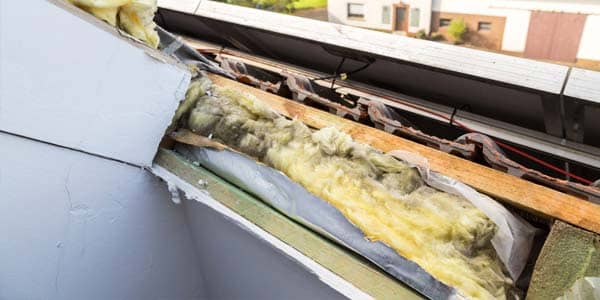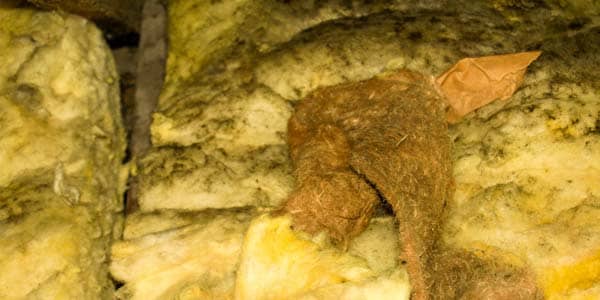Is the Traditional Insulation in Your Walls Making You Sick?


Insulation in Your Walls May Be Making You Sick.
Sadly, your home’s old insulation could be making you and your family ill. That’s because traditional fiberglass or cellulose insulation tends to capture and retain all particles it comes into contact with, such as pollen, dust and mold. By harboring these pollutants, your insulation could be contributing to your allergy and asthma symptoms.
You may need to update your home’s insulation with blown insulation or spray foam insulation in St. Louis MO.
Replace contaminated home insulation.
Reducing Allergens in the Home
From pet dander to mold, there are many allergens that are trapped by your existing fiberglass or cellulose insulation. These materials both allow for excessive air movement, which means the outside air making its way into your house is getting caught in that old material. Then it stays there. For a long time.
The air leaking through from the outside is constantly flowing through the material, bringing harmful particles with it. Now, all those pollen and dust particles are hanging around your home, worsening allergy and asthma symptoms for your family.
What’s In Your Insulation?
Traditional insulation is a haven for pests and critters such as mice, bats, squirrels and others. They leave behind feces and other waste products that sit in that insulation year after year, resulting in the potential for serious health conditions for occupants. Feces spread bacteria and viruses, which is pretty gross – and very unhealthy for humans.
The accumulation of rodent feces can spread bacteria and trigger allergic reactions in humans. Worse yet, those feces can also spread diseases and viruses.
Traditional insulation can also harbor mold, particularly when it comes to fiberglass, which can be overcome by moisture. Excess moisture that is not dried up or cleaned will lead to the growth of mold and mildew. Airborne mold spores get stuck in the insulation fibers and stay there, thriving and growing. Mold leads to poor indoor air quality and can trigger allergic symptoms.
It gets worse. If the mold is allowed to grow unchecked, it can actually rot the wood structural supports of your home. So, how does all that moisture get into your home in the first place? It gets in through gaps and cracks that your traditional batting insulation just can’t fill.
Getting Rid of Allergens
Keeping allergens and mold growth at bay can be achieved by installing foam insulation in your walls and ceilings. This type of insulation fills every available little space in your attic so there is no room for moisture, humidity, allergens, pollutants, and dust to hide. Spray foam insulation is a great solution if you’re looking to reduce airborne allergens and pollutants in your home – and who isn’t?
You’ll soon find your home is more comfortable due to fewer gaps being exposed, plus your indoor air quality will improve and lessen allergic or asthmatic symptoms for your family. Allergy sufferers, young and old, can now rest easy!
Contact Addict Insulation
If you’re thinking about updating your home’s insulation to keep your family healthy, contact your experienced insulation contractors in St. Charles MO at 636-233-7314. professional Insulation contractor St Charles and St. Louis, Missouri area.
Energy Saving BlogInsulation Services in Missouri
- Residential Property
- Insulation Upgrade
- Soundproofing
- Thermal Performance
- Commercial Property
- Increased R-Value
- New Construction
- Energy Efficiency
Popular Articles
- FAQs About Insulation in Missouri
- What Areas Should You Insulate Before Winter?
- The Greatest Risks to Your Home Caused by Poor Insulation
- Why Your Utility Bills Are So High and What You Can Do About It
- Can You Put New Insulation Over Old?
- Here Are 3 Ways Your Attic Could be Contaminated
- How Home Insulation Works in the Summer
- Tips and Tricks For Summer Insulation
- How to Fix Indoor Condensation
- Choosing the Right Spray Foam Contractor
- Why You Need Power Washing This Spring
- Don't Let Air Escape Your Home
- Tips For Saving on Your Energy Bills This Summer
- Should I Install a Radiant Barrier in My Home?
- Are You Wondering if Your Attic Has Enough Insulation?
- Do I Have to Replace Wet Insulation?
- Insulating Your Sunroom
- Should You Insulate Your Outdoor Spaces?
- All About Removing Insulation
- What to Know About Insulating a Crawl Space
- How to Spot Mold in Your Wall Insulation
- How to Prevent Moisture in Your Warehouse With Spray Foam Insulation
- What Factors Cause Heat Gain?
- The Problems That Come With Improper Insulation
- Insulation FAQs
- Why Should You Check the Insulation When Buying a Home?
- Why Seal and Insulate Your Home?
- Home Insulation: Safety and Health
- Should You Remove Old Insulation During Replacement?
- Can I Stay Inside My Home During Spray Foam Insulation Installation?
- Pros and Cons of Converting an Attic
- Pros and Cons of Converting an Attic
- When’s the Best Time to Insulate Your House?
- The Difference Between Blown Insulation and Spray Foam Insulation
- Is Your Garage Loft Too Hot or Too Cold? Heed These Tips
- 6 Health Benefits of Having a Quiet Home
- Insulation Prep is Critical For Installation
- The Dangers of Removing Insulation on Your Own
- What’s the Most Eco-Friendly Insulation?
- 7 Benefits of Spray Foam Insulation
- What is the Proper Insulation For Vaulted Ceilings?
- Signs Your Crawlspace Insulation Should be Replaced
- Why You Should Insulate Your Basement Walls
- Most Effective Ways to Soundproof Your Home Office
- How to Insulate an Old House
- 4 Tips to Make Your Attic More Energy Efficient
- Attic Insulation Problems: 5 Things to Look Out For
- What Causes Condensation on Interior Walls?
- How Deep Should Your Insulation Be?
- What to Consider When Choosing an Insulation Company
- Can You Add New Insulation Layers Over Old Ones?
- When Should You Remove Insulation?
- 7 Tips For an Energy Efficient Summer
- Creating a Healthy, Comfortable and Productive Workspace When Working From Home
- Why is Roof Ventilation Just as Important as Insulation?
- Why Spring is a Good Time to Insulate Your Attic
- 5 Signs of Damaged or Insufficient Insulation
- Is the Insulation in Your Walls Making You Sick?
- Under-Insulated Areas You May Be Overlooking
- The History Of Insulation.
- Pros and Cons of Attic Insulation
- Do You Need Insulation When Finishing a Basement?
- What is Drill and Fill Insulation?
- Which Insulation is Best for Garage Walls?
- How Air is Escaping Your Home and How to Prevent It
- 10 Things You Must Absolutely Insulate Before Winter
- 5 Reasons To Not DIY Insulation
- 5 Signs of an Under-Insulated Home
- 5 Benefits of Blown Insulation
- Cellulose vs. Fiberglass Insulation
- When is Insulation Removal Necessary?
- Tips to Keep Your Home Cool This Summer
- What is the Best Insulation for a Flat Roof?
- 5 Benefits of Power Washing
- Q & A About Insulation
- Reviews
- Energy Saving Blog






